-
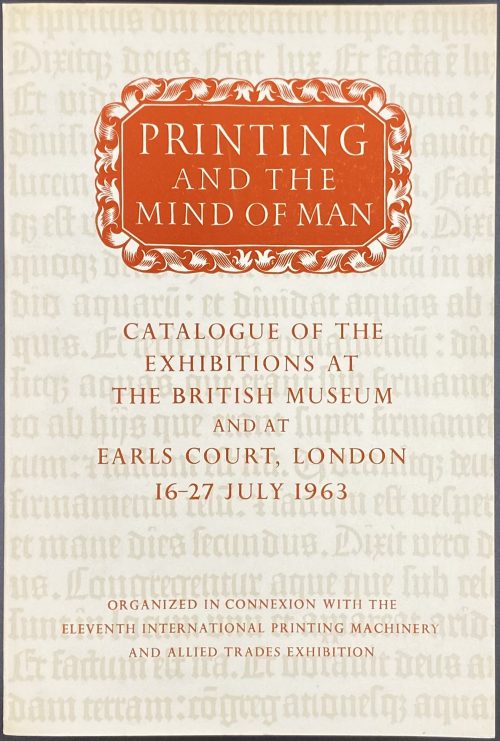 Original exhibition catalogue in wrappers, 23.6 x 16 cm, pp.: [1-4] 5-125 [3], two leaves of plates after p. 16 and 32 plates; [1-8] 9-61 [3], 16 plates; total 192 pages and 26 leaves of photographic plates, one of them in colour. For the 2nd edition of classical PPM see LIB-0775.2015 in this collection. Printer: The University Press, Oxford; Vivian Hughes Ridler (British, 1913 – 2009) Publisher: F. W. Bridges & Sons Ltd.; Association of British Manufacturers of Printers' Machinery Ltd. Authors of preface: Sir Frank Chalton Francis (British, 1901 –1988); Stanley Arthur Morison (British, 1889 – 1967); John Waynflete Carter (British, 1905 – 1975). Front wrapper: PRINTING | AND THE | MIND OF MAN (white lettering in red frame) | CATALOGUE OF THE | EXHIBITION AT | THE BRITISH MUSEUM | AND AT | EARLS COURT, LONDON | 16–27 JULY 1963 | ORGANIZED IN CONNEXION WITH THE | ELEVENTH INTERNATIONAL PRINTING MACHINERY | AND ALLIED TRADES EXHIBITION || (red lettering). Title-page: PRINTING | AND THE | MIND OF MAN (white lettering in black frame) |ASSEMBLED AT | THE BRITISH MUSEUM | AND AT | EARLS COURT | LONDON | 16–27 JULY 1963 | PUBLISHED BY | MESSRS F.W. BRIDGES & SONS LTD AND | THE ASSOCIATION OF BRITISH MANUFACTURERS OF PRINTERS' MACHINERY (PROPRIETARY) LTD | COPIES OBTAINABLE FROM THE BRITISH MUSEUM || Opposite-title: CATALOGUE OF A | DISPLAY OF | PRINTING MECHANISMS AND | PRINTED MATERIALS | ARRANGED TO ILLUSTRATE | THE HISTORY | OF | WESTERN CIVILIZATION | AND THE MEANS OF | THE MULTIPLICATION | OF | LITERARY TEXTS | SINCE THE XV CENTURY | ORGANIZED IN CONNEXION WITH THE | ELEVENTH INTERNATIONAL PRINTING MACHINERY | AND ALLIED TRADES EXHIBITION | UNDER THE TITLE OF ||
Original exhibition catalogue in wrappers, 23.6 x 16 cm, pp.: [1-4] 5-125 [3], two leaves of plates after p. 16 and 32 plates; [1-8] 9-61 [3], 16 plates; total 192 pages and 26 leaves of photographic plates, one of them in colour. For the 2nd edition of classical PPM see LIB-0775.2015 in this collection. Printer: The University Press, Oxford; Vivian Hughes Ridler (British, 1913 – 2009) Publisher: F. W. Bridges & Sons Ltd.; Association of British Manufacturers of Printers' Machinery Ltd. Authors of preface: Sir Frank Chalton Francis (British, 1901 –1988); Stanley Arthur Morison (British, 1889 – 1967); John Waynflete Carter (British, 1905 – 1975). Front wrapper: PRINTING | AND THE | MIND OF MAN (white lettering in red frame) | CATALOGUE OF THE | EXHIBITION AT | THE BRITISH MUSEUM | AND AT | EARLS COURT, LONDON | 16–27 JULY 1963 | ORGANIZED IN CONNEXION WITH THE | ELEVENTH INTERNATIONAL PRINTING MACHINERY | AND ALLIED TRADES EXHIBITION || (red lettering). Title-page: PRINTING | AND THE | MIND OF MAN (white lettering in black frame) |ASSEMBLED AT | THE BRITISH MUSEUM | AND AT | EARLS COURT | LONDON | 16–27 JULY 1963 | PUBLISHED BY | MESSRS F.W. BRIDGES & SONS LTD AND | THE ASSOCIATION OF BRITISH MANUFACTURERS OF PRINTERS' MACHINERY (PROPRIETARY) LTD | COPIES OBTAINABLE FROM THE BRITISH MUSEUM || Opposite-title: CATALOGUE OF A | DISPLAY OF | PRINTING MECHANISMS AND | PRINTED MATERIALS | ARRANGED TO ILLUSTRATE | THE HISTORY | OF | WESTERN CIVILIZATION | AND THE MEANS OF | THE MULTIPLICATION | OF | LITERARY TEXTS | SINCE THE XV CENTURY | ORGANIZED IN CONNEXION WITH THE | ELEVENTH INTERNATIONAL PRINTING MACHINERY | AND ALLIED TRADES EXHIBITION | UNDER THE TITLE OF || -
 Artist: Utagawa Kunisada [歌川 国貞] a.k.a. Utagawa Toyokuni III [三代歌川豊国] (Japanese, 1786 – 1865). Artist signature: By the brush of the 79-year-old Toyokuni [七十九歳豊國画] (Nanajūkyū-sai Toyokuni ga). Publisher: Ebiya Rinnosuke [海老屋林之助] (Japanese, fl. c. 1832 – 1895); seal: ト/ 海老林 (to, Ebirin). Block carver: Matsushima Masakichi [松島政吉]; seal: carved by Masa [彫政] (Hori Masa). Combined date seal and kiwame censor seal: [子極] 1864 (Bunkyū 4/Genji 1). Media: Untrimmed fan print (uchiwa-e), 223 x 297 mm. Inscription in the cartouches: (R) Wakana-hime [若菜姫], Sawamura Tanosuke III [沢村田之助]; (L) Ashikaga Sanshichirō [足利三七郎], Sawamura Tosshō II [沢村訥升]. Play: Kinoene Soga Daikoku-bashira [甲子曽我大国柱], performed at the Morita theatre [森田座・守田座] (Morita-za) in 1864 (Bunkyū 4/Genji 1), 2nd month (see playbill at MFA-Boston Collection). Playwright: Muraoka Kōji II [村岡幸治]. Actors and Characters: Sawamura Tanosuke III [三代目沢村田之助] (Japanese, 1859 – 1878); other names: Shozan [曙山] (poetry name), Sawamura Yoshijirō I [初代沢村由次郎], here in the role of Princess Wakana [若菜姫] (Wakana-hime) (R). The story about Princess Wakana, Shiranui Monogatari, was written by Ryukatei Tanekazu [柳下亭種員] (Japanese, 1807 – 1858) and published as a 90-volume book of comics between 1849 and 1855. ...The tale revolves around the clash between the Kikuchi and Ōtomo clans. Princess Wakana’s father Ōtomo Sōrin [大友 宗麟] (1530 – 1587) was killed in a battle, and his spirit demanded revenge. To appease her late father's spirit, Princes Wakana acquired the power of the Earth Spider. She often appears in prints with a magic scroll, which helps her fight various enemies. Sawamura Tosshō II [二代目沢村訥升] (Japanese, 1854 – 1879); other names: Kōga [高賀] (poetry name), Sawamura Genpei II [二代目沢村源平], Sawamura Sōjūrō [澤村宗十郎], Suketakaya Takasuke IV [四代目助高屋高助], Sawamura Tosshi VI [六代目澤村訥子] (poetry name), here in the role of Ashikaga Sanshichirō [足利三七郎] (L) with a horse. According to Markus Sesko, the scene comes from the kabuki play Umakiri (馬斬り) by Tatsuoka Mansaku [辰岡万作] (17432 – 1809), which premiered in 1794. It was later assimilated into the Kabuki play Kozotte Mimasu Kuruwa no Datezome [襷廓三升伊達染], which was staged in the 1st lunar month of 1853 at the Nakamura-za. Umakiri is based on a Kyōgen play featured in Hideyoshi’s biography Taikōki [太閤記]. Its plot is that Ashikaga Sanchichirō Yoshitaka [足利三七郎義孝・義高], who is supposed to allude to Nobunaga’s son Oda Sanshichirō Nobutaka [織田三七郎信孝], attacks and kills a horse that is carrying 3,000 ryō (金三千両), money Mashiba Hisayoshi [真柴久吉] (an allusion to Hashiba Hideyoshi [羽柴秀吉]) had sent to be donated to a shrine on Mt. Kōya. The surrounding people try to catch him, but when they hear it is Yoshitaka who killed the horse, they fall to the ground and prostrate, and Yoshitaka leisurely leaves with the money. The plot is very simple, but Yoshitaka’s dashing appearance makes it very pleasing to watch. There are also prints that quote the main protagonist as Ashikaga Sanshichirō Harutaka [足利三七郎春高], and there is another title for the play, Sanzen-Ryō Kogane no Kurairi [三千両黄金蔵入] (Pocketing 3,000 ryō of gold). For reference, see also the BLOG. What these two characters are doing in one play remains a riddle. As Mr Graebner comments: "Most kabuki plays were only performed for one season (two months), and the books were lost. The playwrights have repeatedly used parts of plots from other plays, they have adopted characters, sometimes with the same or similar names. What can be found is the Kabuki Playbill (Tsuji banzuke) with cast and roles; the content is lost". Acknowledgements: Special thanks to Horst Graebner of the Kunisada Project and to Markus Sesko of The Metropolitan Museum, NY, for the analysis of the image and their invaluable contribution. For reference, see also:
Artist: Utagawa Kunisada [歌川 国貞] a.k.a. Utagawa Toyokuni III [三代歌川豊国] (Japanese, 1786 – 1865). Artist signature: By the brush of the 79-year-old Toyokuni [七十九歳豊國画] (Nanajūkyū-sai Toyokuni ga). Publisher: Ebiya Rinnosuke [海老屋林之助] (Japanese, fl. c. 1832 – 1895); seal: ト/ 海老林 (to, Ebirin). Block carver: Matsushima Masakichi [松島政吉]; seal: carved by Masa [彫政] (Hori Masa). Combined date seal and kiwame censor seal: [子極] 1864 (Bunkyū 4/Genji 1). Media: Untrimmed fan print (uchiwa-e), 223 x 297 mm. Inscription in the cartouches: (R) Wakana-hime [若菜姫], Sawamura Tanosuke III [沢村田之助]; (L) Ashikaga Sanshichirō [足利三七郎], Sawamura Tosshō II [沢村訥升]. Play: Kinoene Soga Daikoku-bashira [甲子曽我大国柱], performed at the Morita theatre [森田座・守田座] (Morita-za) in 1864 (Bunkyū 4/Genji 1), 2nd month (see playbill at MFA-Boston Collection). Playwright: Muraoka Kōji II [村岡幸治]. Actors and Characters: Sawamura Tanosuke III [三代目沢村田之助] (Japanese, 1859 – 1878); other names: Shozan [曙山] (poetry name), Sawamura Yoshijirō I [初代沢村由次郎], here in the role of Princess Wakana [若菜姫] (Wakana-hime) (R). The story about Princess Wakana, Shiranui Monogatari, was written by Ryukatei Tanekazu [柳下亭種員] (Japanese, 1807 – 1858) and published as a 90-volume book of comics between 1849 and 1855. ...The tale revolves around the clash between the Kikuchi and Ōtomo clans. Princess Wakana’s father Ōtomo Sōrin [大友 宗麟] (1530 – 1587) was killed in a battle, and his spirit demanded revenge. To appease her late father's spirit, Princes Wakana acquired the power of the Earth Spider. She often appears in prints with a magic scroll, which helps her fight various enemies. Sawamura Tosshō II [二代目沢村訥升] (Japanese, 1854 – 1879); other names: Kōga [高賀] (poetry name), Sawamura Genpei II [二代目沢村源平], Sawamura Sōjūrō [澤村宗十郎], Suketakaya Takasuke IV [四代目助高屋高助], Sawamura Tosshi VI [六代目澤村訥子] (poetry name), here in the role of Ashikaga Sanshichirō [足利三七郎] (L) with a horse. According to Markus Sesko, the scene comes from the kabuki play Umakiri (馬斬り) by Tatsuoka Mansaku [辰岡万作] (17432 – 1809), which premiered in 1794. It was later assimilated into the Kabuki play Kozotte Mimasu Kuruwa no Datezome [襷廓三升伊達染], which was staged in the 1st lunar month of 1853 at the Nakamura-za. Umakiri is based on a Kyōgen play featured in Hideyoshi’s biography Taikōki [太閤記]. Its plot is that Ashikaga Sanchichirō Yoshitaka [足利三七郎義孝・義高], who is supposed to allude to Nobunaga’s son Oda Sanshichirō Nobutaka [織田三七郎信孝], attacks and kills a horse that is carrying 3,000 ryō (金三千両), money Mashiba Hisayoshi [真柴久吉] (an allusion to Hashiba Hideyoshi [羽柴秀吉]) had sent to be donated to a shrine on Mt. Kōya. The surrounding people try to catch him, but when they hear it is Yoshitaka who killed the horse, they fall to the ground and prostrate, and Yoshitaka leisurely leaves with the money. The plot is very simple, but Yoshitaka’s dashing appearance makes it very pleasing to watch. There are also prints that quote the main protagonist as Ashikaga Sanshichirō Harutaka [足利三七郎春高], and there is another title for the play, Sanzen-Ryō Kogane no Kurairi [三千両黄金蔵入] (Pocketing 3,000 ryō of gold). For reference, see also the BLOG. What these two characters are doing in one play remains a riddle. As Mr Graebner comments: "Most kabuki plays were only performed for one season (two months), and the books were lost. The playwrights have repeatedly used parts of plots from other plays, they have adopted characters, sometimes with the same or similar names. What can be found is the Kabuki Playbill (Tsuji banzuke) with cast and roles; the content is lost". Acknowledgements: Special thanks to Horst Graebner of the Kunisada Project and to Markus Sesko of The Metropolitan Museum, NY, for the analysis of the image and their invaluable contribution. For reference, see also: -
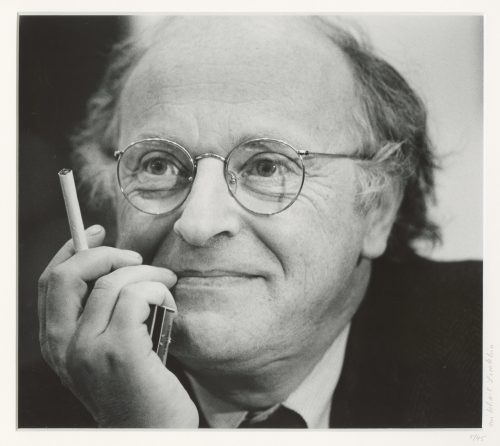 Photographic portrait of poet Joseph Brodsky, head, hand, and shoulder, three-quarters to the left, wearing glasses and with a cigarette. Pencil-signed on the mat: 5/45 • Mikhail Lemkhin; same inscription on the back of the print, and ink stamp ©Mikhail Lemkhin. Sitter: Joseph Brodsky [Иосиф Александрович Бродский ] (Russian-American-Jewish, 1940 – 1996). Size: mat: 41 x 51 cm; window: 27 x 30 cm; print: 27.7 x 35.4 cm.
Photographic portrait of poet Joseph Brodsky, head, hand, and shoulder, three-quarters to the left, wearing glasses and with a cigarette. Pencil-signed on the mat: 5/45 • Mikhail Lemkhin; same inscription on the back of the print, and ink stamp ©Mikhail Lemkhin. Sitter: Joseph Brodsky [Иосиф Александрович Бродский ] (Russian-American-Jewish, 1940 – 1996). Size: mat: 41 x 51 cm; window: 27 x 30 cm; print: 27.7 x 35.4 cm. -
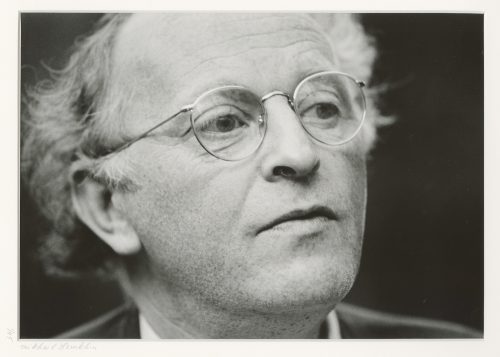 Photographic portrait of poet Joseph Brodsky, head and shoulders, three-quarters to the right, wearing glasses. Pencil-signed on the mat: 1/45 • Mikhail Lemkhin; same inscription on the back of the print, and ink stamp ©Mikhail Lemkhin. Sitter: Joseph Brodsky [Иосиф Александрович Бродский ] (Russian-American-Jewish, 1940 – 1996). Size: mat: 40.5 x 51 cm; window: 24.5 x 35 cm; print: 27.7 x 35.4 cm.
Photographic portrait of poet Joseph Brodsky, head and shoulders, three-quarters to the right, wearing glasses. Pencil-signed on the mat: 1/45 • Mikhail Lemkhin; same inscription on the back of the print, and ink stamp ©Mikhail Lemkhin. Sitter: Joseph Brodsky [Иосиф Александрович Бродский ] (Russian-American-Jewish, 1940 – 1996). Size: mat: 40.5 x 51 cm; window: 24.5 x 35 cm; print: 27.7 x 35.4 cm. -
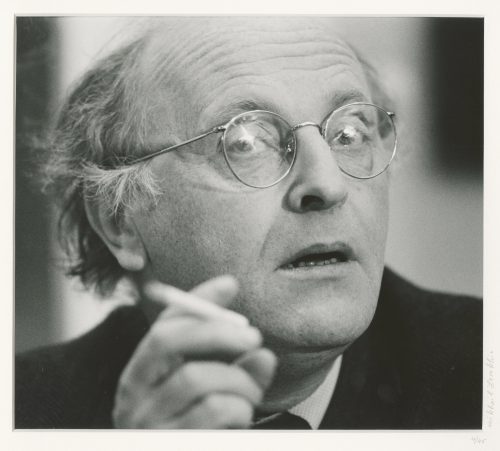 Photographic portrait of poet Joseph Brodsky, head, hand, and shoulder, three-quarters to the right, wearing glasses and with a cigarette. Pencil-signed on the mat: 4/45 • Mikhail Lemkhin; same inscription on the back of the print, and ink stamp ©Mikhail Lemkhin. Sitter: Joseph Brodsky [Иосиф Александрович Бродский ] (Russian-American-Jewish, 1940 – 1996). Size: mat: 40.5 x 51 cm; window: 26.5 x 30 cm; print: 28 x 35.4 cm.
Photographic portrait of poet Joseph Brodsky, head, hand, and shoulder, three-quarters to the right, wearing glasses and with a cigarette. Pencil-signed on the mat: 4/45 • Mikhail Lemkhin; same inscription on the back of the print, and ink stamp ©Mikhail Lemkhin. Sitter: Joseph Brodsky [Иосиф Александрович Бродский ] (Russian-American-Jewish, 1940 – 1996). Size: mat: 40.5 x 51 cm; window: 26.5 x 30 cm; print: 28 x 35.4 cm. -
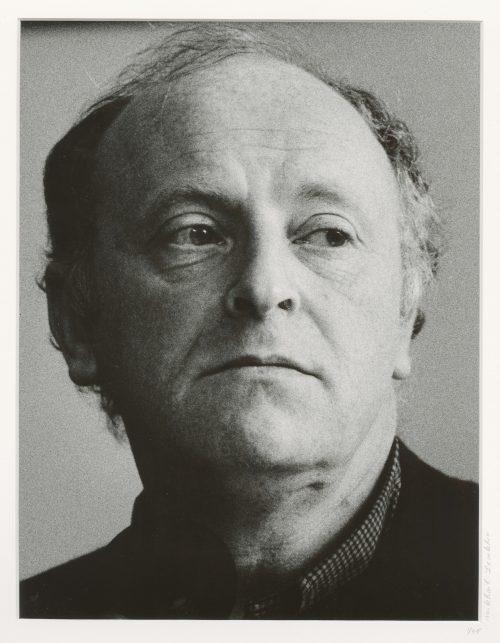 Photographic portrait of poet Joseph Brodsky, head and shoulder, turned slightly right, looking to the right. Pencil-signed on the mat: 1/45 • Mikhail Lemkhin; same inscription on the back of the print, and ink stamp ©Mikhail Lemkhin. Sitter: Joseph Brodsky [Иосиф Александрович Бродский ] (Russian-American-Jewish, 1940 – 1996). Size: mat: 51 x 40.5 cm; window: 34.5 x 27 cm; print: 35 x 28 cm.
Photographic portrait of poet Joseph Brodsky, head and shoulder, turned slightly right, looking to the right. Pencil-signed on the mat: 1/45 • Mikhail Lemkhin; same inscription on the back of the print, and ink stamp ©Mikhail Lemkhin. Sitter: Joseph Brodsky [Иосиф Александрович Бродский ] (Russian-American-Jewish, 1940 – 1996). Size: mat: 51 x 40.5 cm; window: 34.5 x 27 cm; print: 35 x 28 cm. -
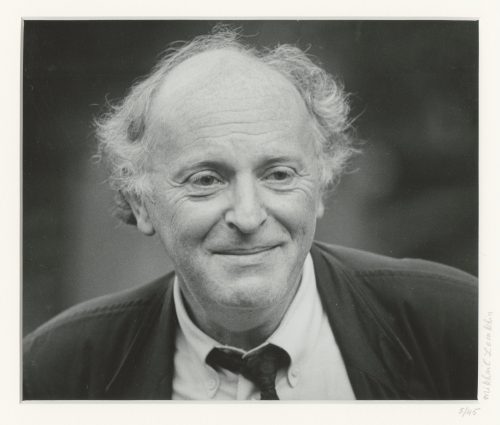 Photographic portrait of poet Joseph Brodsky, head and shoulders, turned slightly right, looking slightly to the right. Pencil-signed on the mat: 5/45 • Mikhail Lemkhin; same inscription on the back of the print, and ink stamp ©Mikhail Lemkhin. Sitter: Joseph Brodsky [Иосиф Александрович Бродский ] (Russian-American-Jewish, 1940 – 1996). Size: mat: 35.7 x 43.3 cm; window: 19.5 x 23 cm; print: 20.3 x 25.3 cm.
Photographic portrait of poet Joseph Brodsky, head and shoulders, turned slightly right, looking slightly to the right. Pencil-signed on the mat: 5/45 • Mikhail Lemkhin; same inscription on the back of the print, and ink stamp ©Mikhail Lemkhin. Sitter: Joseph Brodsky [Иосиф Александрович Бродский ] (Russian-American-Jewish, 1940 – 1996). Size: mat: 35.7 x 43.3 cm; window: 19.5 x 23 cm; print: 20.3 x 25.3 cm. -
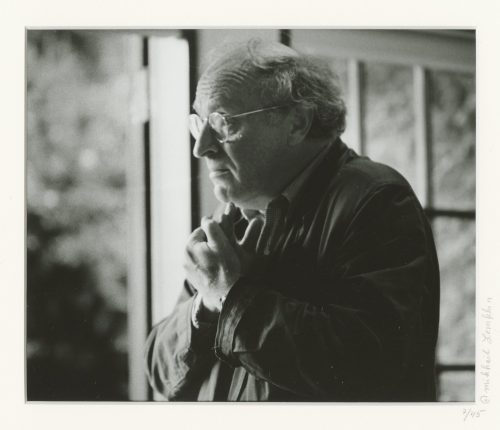 Photographic portrait of poet Joseph Brodsky, short half-length, turned to the left, with arms crossed on his breast. Pencil-signed on the mat: 7/45 • Mikhail Lemkhin; same inscription on the back of the print, and ink stamp ©Mikhail Lemkhin. Sitter: Joseph Brodsky [Иосиф Александрович Бродский ] (Russian-American-Jewish, 1940 – 1996). Size: mat: 35.7 x 43.3 cm; window: 19.5 x 23 cm; print: 20.3 x 25.3 cm.
Photographic portrait of poet Joseph Brodsky, short half-length, turned to the left, with arms crossed on his breast. Pencil-signed on the mat: 7/45 • Mikhail Lemkhin; same inscription on the back of the print, and ink stamp ©Mikhail Lemkhin. Sitter: Joseph Brodsky [Иосиф Александрович Бродский ] (Russian-American-Jewish, 1940 – 1996). Size: mat: 35.7 x 43.3 cm; window: 19.5 x 23 cm; print: 20.3 x 25.3 cm. -
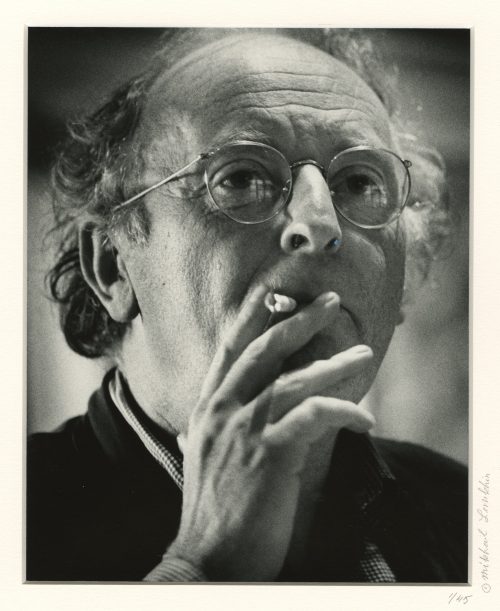 Photographic portrait of poet Joseph Brodsky, head, shoulders, and hand, three-quarters to the right, wearing glasses and with a cigarette. Pencil-signed on the mat: 1/45 • ©Mikhail Lemkhin; same inscription on the back of the print, and ink stamp ©Mikhail Lemkhin. Sitter: Joseph Brodsky [Иосиф Александрович Бродский ] (Russian-American-Jewish, 1940 – 1996). Size: mat: 43 x 35.5 cm; window: 24 x 19 cm.
Photographic portrait of poet Joseph Brodsky, head, shoulders, and hand, three-quarters to the right, wearing glasses and with a cigarette. Pencil-signed on the mat: 1/45 • ©Mikhail Lemkhin; same inscription on the back of the print, and ink stamp ©Mikhail Lemkhin. Sitter: Joseph Brodsky [Иосиф Александрович Бродский ] (Russian-American-Jewish, 1940 – 1996). Size: mat: 43 x 35.5 cm; window: 24 x 19 cm. -
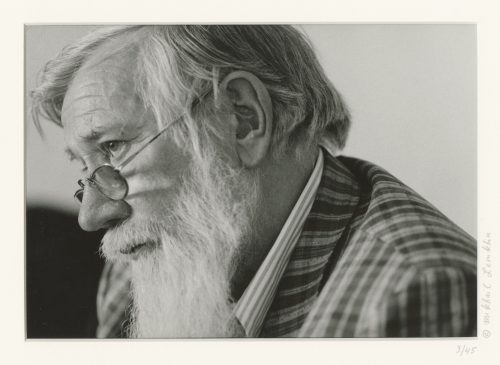 Photographic portrait of writer Andrei Sinyavsky, head and shoulder, turned to the left, wearing glasses. Pencil-signed on the mat: 3/45 • ©Mikhail Lemkhin; on the back of the print: Copyright statement stamp; ink stamp ©MIKHAIL LEMKHIN; ink stamp: PHOTO BY MIKHAIL LEMKHIN | 1811 38TH AVENUE | SAN FRANCISCO, CA 94122 | (415) 664-7677; pencil inscription on the back of the mat: (top) АНДРЕЙ СИНЯВСКИЙ | ANDREI SINYAVSKY, (bottom) XXIX. Sitter: Andrei Sinyavsky [Андрей Донатович Синявский] (Russian, 1925 – 1997) Size: mat: 35.6 x 43.3 cm; window: 16.5 x 23.5 cm; print: 20.2 x 25.2 cm.
Photographic portrait of writer Andrei Sinyavsky, head and shoulder, turned to the left, wearing glasses. Pencil-signed on the mat: 3/45 • ©Mikhail Lemkhin; on the back of the print: Copyright statement stamp; ink stamp ©MIKHAIL LEMKHIN; ink stamp: PHOTO BY MIKHAIL LEMKHIN | 1811 38TH AVENUE | SAN FRANCISCO, CA 94122 | (415) 664-7677; pencil inscription on the back of the mat: (top) АНДРЕЙ СИНЯВСКИЙ | ANDREI SINYAVSKY, (bottom) XXIX. Sitter: Andrei Sinyavsky [Андрей Донатович Синявский] (Russian, 1925 – 1997) Size: mat: 35.6 x 43.3 cm; window: 16.5 x 23.5 cm; print: 20.2 x 25.2 cm. -
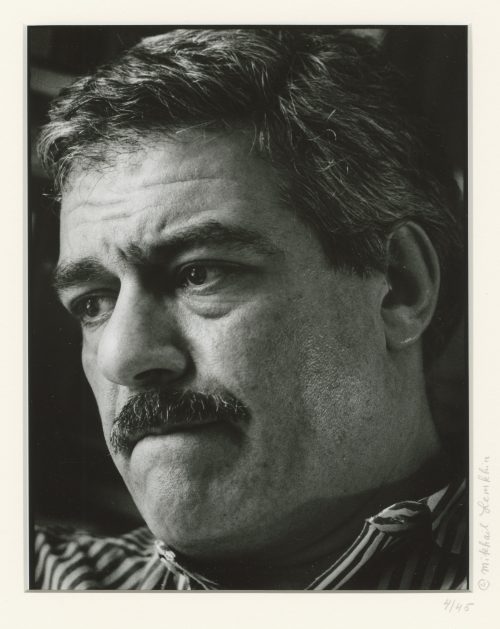 Photographic portrait of writer Andrei Sinyavsky, head and shoulder, turned to the left, wearing glasses. Pencil-signed on the mat: 4/45 • ©Mikhail Lemkhin; on the back of the print: Copyright statement stamp; ink stamp ©MIKHAIL LEMKHIN; ink stamp: PHOTO BY MIKHAIL LEMKHIN | 1811 38TH AVENUE | SAN FRANCISCO, CA 94122 | (415) 664-7677; pencil inscription on the back of the mat: (top) АНДРЕЙ СИНЯВСКИЙ | ANDREI SINYAVSKY, (bottom) XXIX. Size: mat: 43.2 x 35.5 cm; window: 23.5 x 18.5 cm; print: 25.2 x 20.2 cm. Limited edition of 45, of which this is № 4, signed and stamped by the artist. Sitter: Sergei Dovlatov [Сергей Донатович Довлатов] (Russian, 1941 – 1990)
Photographic portrait of writer Andrei Sinyavsky, head and shoulder, turned to the left, wearing glasses. Pencil-signed on the mat: 4/45 • ©Mikhail Lemkhin; on the back of the print: Copyright statement stamp; ink stamp ©MIKHAIL LEMKHIN; ink stamp: PHOTO BY MIKHAIL LEMKHIN | 1811 38TH AVENUE | SAN FRANCISCO, CA 94122 | (415) 664-7677; pencil inscription on the back of the mat: (top) АНДРЕЙ СИНЯВСКИЙ | ANDREI SINYAVSKY, (bottom) XXIX. Size: mat: 43.2 x 35.5 cm; window: 23.5 x 18.5 cm; print: 25.2 x 20.2 cm. Limited edition of 45, of which this is № 4, signed and stamped by the artist. Sitter: Sergei Dovlatov [Сергей Донатович Довлатов] (Russian, 1941 – 1990) -
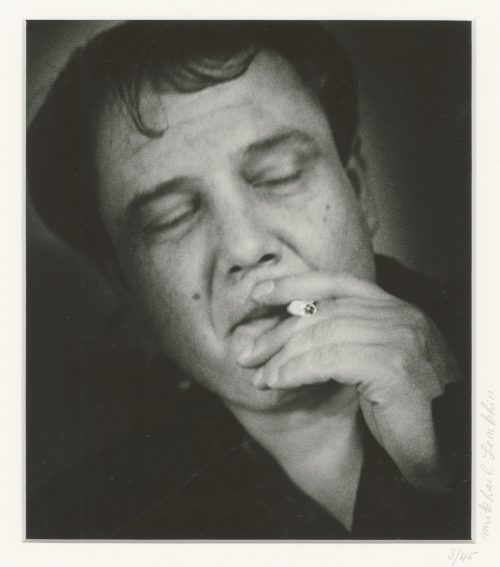 Photographic portrait of writer Vladimir Bukovsky with head tilted, closed eyes, and smoking a cigarette. Pencil-signed on the mat: 3/45 • Mikhail Lemkhin; on the back of the print: ink stamp ©MIKHAIL LEMKHIN, ink inscription ©mikhail Lemkhin; ink stamp: PHOTO BY: | MIKHAIL LEMKHIN | 2327 – 38th AVENUE | SAN FRANCISCO, CA 94116 | (415) 664-7677, pencil inscription 3/45 Mikhail Lemkhin; pencil inscription on the back of the mat: (top) ВЛАДИМИР БУКОВСКИЙ | VLADIMIR BUKOVSKY, (bottom) VI. Size: mat: 43.2 x 35.7 cm; window: 21.5 x 18.5 cm; print: 25.3 x 20.3 cm. Limited edition of 45, of which this is № 3, signed and stamped by the artist. Sitter: Vladimir Bukovsky [Владимир Константинович Буковский] (Russian, 1942 – 2019). Popularity: Bukovsky left the Soviet Union, where he was kept in prison for his political views, in exchange for Luis Alberto Corvalán, a Chilean communist. The event was commemorated in the following folk verse:
Photographic portrait of writer Vladimir Bukovsky with head tilted, closed eyes, and smoking a cigarette. Pencil-signed on the mat: 3/45 • Mikhail Lemkhin; on the back of the print: ink stamp ©MIKHAIL LEMKHIN, ink inscription ©mikhail Lemkhin; ink stamp: PHOTO BY: | MIKHAIL LEMKHIN | 2327 – 38th AVENUE | SAN FRANCISCO, CA 94116 | (415) 664-7677, pencil inscription 3/45 Mikhail Lemkhin; pencil inscription on the back of the mat: (top) ВЛАДИМИР БУКОВСКИЙ | VLADIMIR BUKOVSKY, (bottom) VI. Size: mat: 43.2 x 35.7 cm; window: 21.5 x 18.5 cm; print: 25.3 x 20.3 cm. Limited edition of 45, of which this is № 3, signed and stamped by the artist. Sitter: Vladimir Bukovsky [Владимир Константинович Буковский] (Russian, 1942 – 2019). Popularity: Bukovsky left the Soviet Union, where he was kept in prison for his political views, in exchange for Luis Alberto Corvalán, a Chilean communist. The event was commemorated in the following folk verse:Обменяли хулигана На Луиса Корвалана. Где б найти такую блядь, Чтоб на Брежнева сменять!
This can be translated as a Haiku:A troublemaker was exchanged for Luis Corvalán... Where to find a whore to exchange for Brezhnev?
-
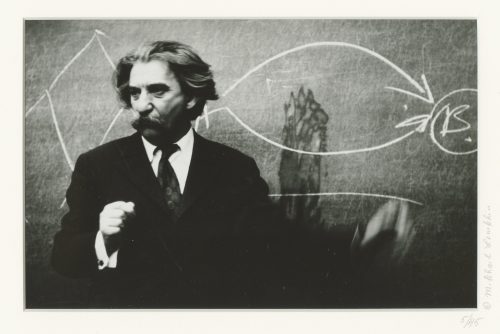 Photographic half-length portrait of academician Juri Lotman, with his head turned to the left, giving a lecture in front of a blackboard. Pencil-signed on the mat: 5/45 • ©Mikhail Lemkhin; on the back of the print: ink stamp ©MIKHAIL LEMKHIN, pencil inscription Mikhail Lemkhin 5/45; ink stamp: PHOTO BY MIKHAIL LEMKHIN | 1811–38th AVENUE | SAN FRANCISCO, CA 94122 | (415) 664-7677; Copyright statement ink stamp; on the back of the mat: pencil inscription (top) ЛОТМАН, ЮРИЙ | YURI LOTMAN, (bottom) VI. Size: mat: 35.6 x 43.1 cm; window: 15.5 x 24 cm; print: 20.2 x 25.3 cm. Limited edition of 45, of which this is № 5, signed and stamped by the artist. Sitter: Juri Lotman [Юрий Михайлович Лотман] (Estonian-Jewish, 1922 – 1993).
Photographic half-length portrait of academician Juri Lotman, with his head turned to the left, giving a lecture in front of a blackboard. Pencil-signed on the mat: 5/45 • ©Mikhail Lemkhin; on the back of the print: ink stamp ©MIKHAIL LEMKHIN, pencil inscription Mikhail Lemkhin 5/45; ink stamp: PHOTO BY MIKHAIL LEMKHIN | 1811–38th AVENUE | SAN FRANCISCO, CA 94122 | (415) 664-7677; Copyright statement ink stamp; on the back of the mat: pencil inscription (top) ЛОТМАН, ЮРИЙ | YURI LOTMAN, (bottom) VI. Size: mat: 35.6 x 43.1 cm; window: 15.5 x 24 cm; print: 20.2 x 25.3 cm. Limited edition of 45, of which this is № 5, signed and stamped by the artist. Sitter: Juri Lotman [Юрий Михайлович Лотман] (Estonian-Jewish, 1922 – 1993). -
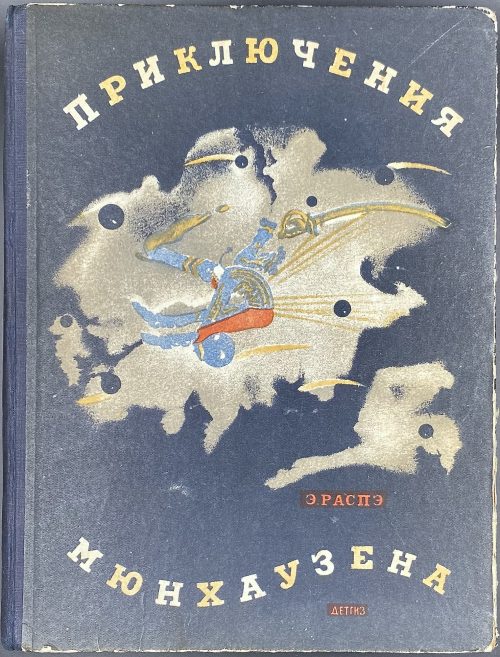 Hardcover, 26.2 x 20.3 cm, quarter blue cloth over pictorial boards, pictorial endpapers, collated in-8vo, 1-58 64, pp.: [2] 3-87 [88], total 44 leaves with in-text woodcuts plus 8 leaves of colour plates (14 illustrations printed on both sides) and colour frontispiece (blank recto) after Gustave Doré. The story was written by Rudolf Erich Raspe in English and published anonymously in book form in Oxford in 1786 under the title Baron Munchausen's Narrative of his marvellous travels and campaigns in Russia, etc. The French translation from German of Gottfried August Bürger was performed by Théophile Gautier and published by Charles Furne in Paris in 1862 with illustrations after Gustave Doré – 158 wood engravings, including a frontispiece, 1 vignette on the title, 31 full-page plates and 125 vignettes in the text). Korney Chukovsky retold the Raspe story in Russian using the Būrger-Gautier version of the text, changing the order, time, and location of events. In addition, artist Yuri Syrnev (Ю. А. Сырнев) coloured Dore's woodcuts, and the book was born (first edition in 1928). Title-page (black and yellow earth): Э. РАСПЭ | ПРИКЛЮЧЕНИЯ | {vignette} | МЮНХАУЗЕНА | С ИЛЛЮСТРАЦИЯМИ | ГУСТАВА | ДОРЭ | • | ДЛЯ | ДЕТЕЙ | ПЕРЕСКАЗАЛ К.ЧУКОВСКИЙ | • | ГОСУДАРСТВЕННОЕ ИЗДАТЕЛЬСТВО ДЕТСКОЙ ЛИТЕРАТУРЫ | НАРКОМПРОСА РСФСР | Москва 1945 Ленинград || Colophon: Для младшего возраста | РАСКРАСКА ВКЛЕЕК, ТИТУЛ И ОБЛОЖКА | худ. Ю. Сырнева | Издание десятое || Edition: 10th Russian edition thus. Print run: 11,000 copies. Contributors: Rudolf Erich Raspe (German, 1736 – 1794) – author. Korney Chukovsky [Корней Иванович Чуковский, Николай Корнейчуков] (Russian, 1882 – 1969) – translator. Gustave Doré (French, 1832 – 1883) – artist. Юрий Аркадьевич Сырнев (Russian, 1905 – 1943) – artist. Fictional author: Baron Munchausen [Baron Münchhausen] / Karl Friedrich Hieronymus von Münchhausen (German, 1720 – 1797).
Hardcover, 26.2 x 20.3 cm, quarter blue cloth over pictorial boards, pictorial endpapers, collated in-8vo, 1-58 64, pp.: [2] 3-87 [88], total 44 leaves with in-text woodcuts plus 8 leaves of colour plates (14 illustrations printed on both sides) and colour frontispiece (blank recto) after Gustave Doré. The story was written by Rudolf Erich Raspe in English and published anonymously in book form in Oxford in 1786 under the title Baron Munchausen's Narrative of his marvellous travels and campaigns in Russia, etc. The French translation from German of Gottfried August Bürger was performed by Théophile Gautier and published by Charles Furne in Paris in 1862 with illustrations after Gustave Doré – 158 wood engravings, including a frontispiece, 1 vignette on the title, 31 full-page plates and 125 vignettes in the text). Korney Chukovsky retold the Raspe story in Russian using the Būrger-Gautier version of the text, changing the order, time, and location of events. In addition, artist Yuri Syrnev (Ю. А. Сырнев) coloured Dore's woodcuts, and the book was born (first edition in 1928). Title-page (black and yellow earth): Э. РАСПЭ | ПРИКЛЮЧЕНИЯ | {vignette} | МЮНХАУЗЕНА | С ИЛЛЮСТРАЦИЯМИ | ГУСТАВА | ДОРЭ | • | ДЛЯ | ДЕТЕЙ | ПЕРЕСКАЗАЛ К.ЧУКОВСКИЙ | • | ГОСУДАРСТВЕННОЕ ИЗДАТЕЛЬСТВО ДЕТСКОЙ ЛИТЕРАТУРЫ | НАРКОМПРОСА РСФСР | Москва 1945 Ленинград || Colophon: Для младшего возраста | РАСКРАСКА ВКЛЕЕК, ТИТУЛ И ОБЛОЖКА | худ. Ю. Сырнева | Издание десятое || Edition: 10th Russian edition thus. Print run: 11,000 copies. Contributors: Rudolf Erich Raspe (German, 1736 – 1794) – author. Korney Chukovsky [Корней Иванович Чуковский, Николай Корнейчуков] (Russian, 1882 – 1969) – translator. Gustave Doré (French, 1832 – 1883) – artist. Юрий Аркадьевич Сырнев (Russian, 1905 – 1943) – artist. Fictional author: Baron Munchausen [Baron Münchhausen] / Karl Friedrich Hieronymus von Münchhausen (German, 1720 – 1797). -
 The so-called Yoshirō-tsuba [与四郎鐔] with an iron plate of mokkō form densely decorated with floral arabesque and adorned with eight pierced, chiselled and inlaid brass roundels and signed on both sides 'Koike Yoshirō Izumi no Kami Naomasa'. Four of the roundels are pierced and have geometrical designs representing flowers (e.g. wood sorrel) or snowflakes. Four others are solid and represent family crests; on one side: Mulberry (kaji) – mon of the Matsunaga clan [松永氏], Bamboo Grass (sasa) – mon of the Takenaka clan [竹中氏]), Wild Geese (kari) – mon of the Shibata clan [新発田氏]), and Pine Needles (matsuba); on the other side: Nine Stars (kuyō) – the Hosokawa clan [細川氏], Paulownia (kiri) – the Toyotomi clan [豊臣氏]), Bamboo Leaves (take) – the Minamoto clan [源], and Seven Treasures (shippo) – Izumo Genji clan [出雲源氏]. Hitsu-ana obliterated with a nanako-treated pewter plug. Brass with rainbow patina. Artist: Koike Izumi no Kami Naomasa (Japanese, active late 16th – early 17th century). The Momoyama or early Edo period, end of the 16th to the first half of the 17th century (1574-1650). Size: 81.7 x 78.8 x 4.3 cm. Provenance: Dr. Kazutaro Torigoye. Special thanks to Markus Sesko for providing the translation of hakogaki. Hakokaki lid (outside): 小池与四郎 – Koike Yoshirō Hakokaki lid (inside): 銘曰小池与四郎 – Mei’etsu: Koike Yoshirō – Signed: Koike Yoshirō 和泉守直正 – Izumi no Kami Naomasa – Izumi no Kami Naomasa 木瓜形 鉄地 – Mokkōgata, tetsu-ji – Lobed shape, of iron 真鍮据紋象嵌 – Shinchū suemon-zōgan – with brass suemon-zōgan inlay 縦二寸七分横二寸六分 – Tate ni-sun shichi-bu, yoko ni-sun roku-bu – Height 8.2 cm, width 7.9 cm 右正真也 – Migi shōshin nari – Above described object is authentic 昭和廾九年八月十一日 – Shōwa nijūkyūnen hachigatsu jūichinichi – August 11, 1954 草堂「花押」– Sōdō + kaō – Sōdō [pen name of Torigoye Kazutarō, 鳥越一太郎] + monogram Ref.: (1) Tsuba Geijutsu-Ko by Kazutaro Torigoye, 1960; (2) Tsuba. An aesthetic study. By Kazutaro Torigoye and Robert E. Haynes from the Tsuba Geijutsu-kō of Kazataro Torigoye. Edited and published by Alan L. Harvie for the Nothern California Japanese Sword Club, 1994-1997, p. Yoshirō, 4. See also Yoshirō tsuba.
The so-called Yoshirō-tsuba [与四郎鐔] with an iron plate of mokkō form densely decorated with floral arabesque and adorned with eight pierced, chiselled and inlaid brass roundels and signed on both sides 'Koike Yoshirō Izumi no Kami Naomasa'. Four of the roundels are pierced and have geometrical designs representing flowers (e.g. wood sorrel) or snowflakes. Four others are solid and represent family crests; on one side: Mulberry (kaji) – mon of the Matsunaga clan [松永氏], Bamboo Grass (sasa) – mon of the Takenaka clan [竹中氏]), Wild Geese (kari) – mon of the Shibata clan [新発田氏]), and Pine Needles (matsuba); on the other side: Nine Stars (kuyō) – the Hosokawa clan [細川氏], Paulownia (kiri) – the Toyotomi clan [豊臣氏]), Bamboo Leaves (take) – the Minamoto clan [源], and Seven Treasures (shippo) – Izumo Genji clan [出雲源氏]. Hitsu-ana obliterated with a nanako-treated pewter plug. Brass with rainbow patina. Artist: Koike Izumi no Kami Naomasa (Japanese, active late 16th – early 17th century). The Momoyama or early Edo period, end of the 16th to the first half of the 17th century (1574-1650). Size: 81.7 x 78.8 x 4.3 cm. Provenance: Dr. Kazutaro Torigoye. Special thanks to Markus Sesko for providing the translation of hakogaki. Hakokaki lid (outside): 小池与四郎 – Koike Yoshirō Hakokaki lid (inside): 銘曰小池与四郎 – Mei’etsu: Koike Yoshirō – Signed: Koike Yoshirō 和泉守直正 – Izumi no Kami Naomasa – Izumi no Kami Naomasa 木瓜形 鉄地 – Mokkōgata, tetsu-ji – Lobed shape, of iron 真鍮据紋象嵌 – Shinchū suemon-zōgan – with brass suemon-zōgan inlay 縦二寸七分横二寸六分 – Tate ni-sun shichi-bu, yoko ni-sun roku-bu – Height 8.2 cm, width 7.9 cm 右正真也 – Migi shōshin nari – Above described object is authentic 昭和廾九年八月十一日 – Shōwa nijūkyūnen hachigatsu jūichinichi – August 11, 1954 草堂「花押」– Sōdō + kaō – Sōdō [pen name of Torigoye Kazutarō, 鳥越一太郎] + monogram Ref.: (1) Tsuba Geijutsu-Ko by Kazutaro Torigoye, 1960; (2) Tsuba. An aesthetic study. By Kazutaro Torigoye and Robert E. Haynes from the Tsuba Geijutsu-kō of Kazataro Torigoye. Edited and published by Alan L. Harvie for the Nothern California Japanese Sword Club, 1994-1997, p. Yoshirō, 4. See also Yoshirō tsuba. -
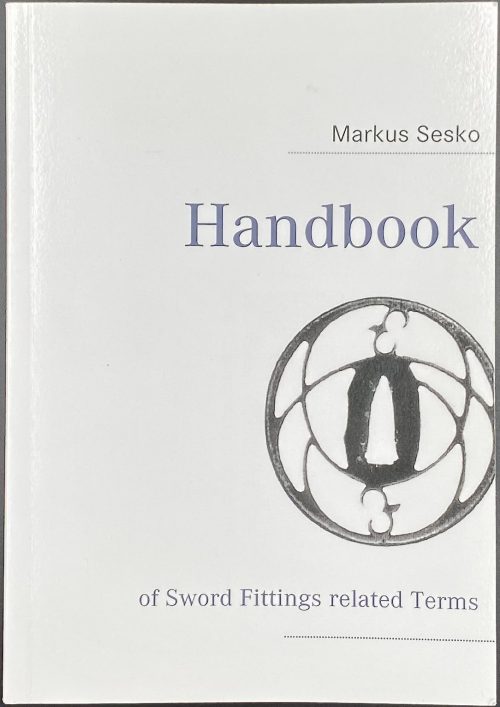 Softcover, 21 x 14.8 cm, print on demand edition, pp.: 1-88 [2], total 90 pages, pp. 1, 2, 88, and 89 blanks, p. 90 colophon. Font cover: Markus Sesko | — | Handbook | {vignette} | of Sword Fittings related Terms | — || Title-page: Handbook | of Sword Fittings | related Terms | © 2011 Markus Sesko | Herstellung und Verlag: | Books on Demand GmbH, Norderstedt | ISBN 978-308423-6422-6 || On the back cover: Blurb, publisher’s device in blue and black, barcode, and web address. Lettering to spine. Printed in the USA.
Softcover, 21 x 14.8 cm, print on demand edition, pp.: 1-88 [2], total 90 pages, pp. 1, 2, 88, and 89 blanks, p. 90 colophon. Font cover: Markus Sesko | — | Handbook | {vignette} | of Sword Fittings related Terms | — || Title-page: Handbook | of Sword Fittings | related Terms | © 2011 Markus Sesko | Herstellung und Verlag: | Books on Demand GmbH, Norderstedt | ISBN 978-308423-6422-6 || On the back cover: Blurb, publisher’s device in blue and black, barcode, and web address. Lettering to spine. Printed in the USA. -
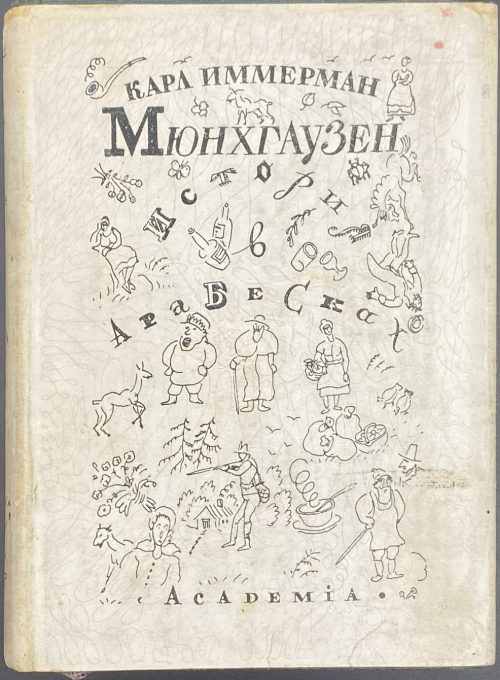
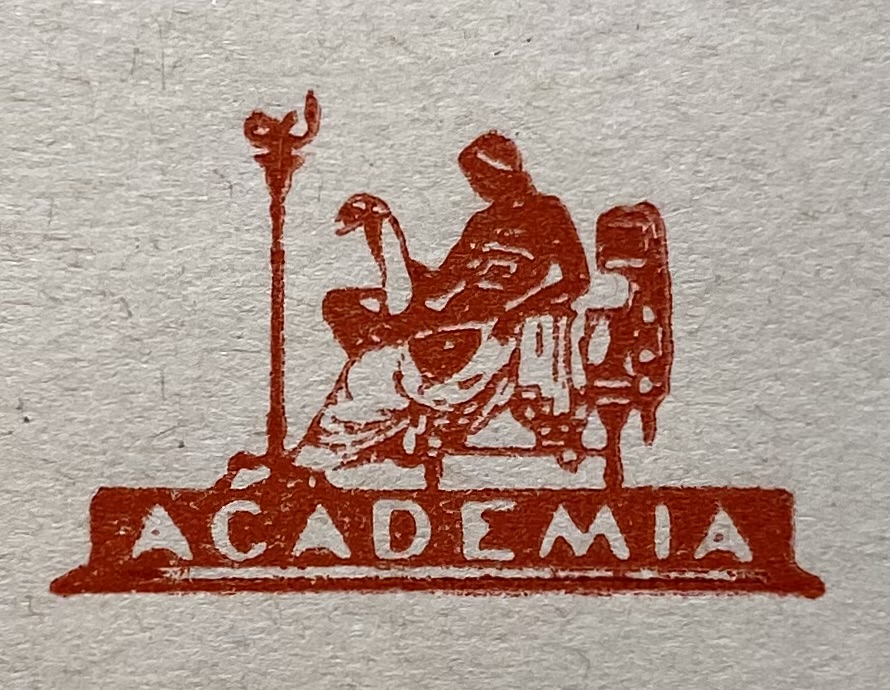 The book Münchhausen: eine Geschichte in Arabesken by Karl Leberecht Immermann was published in Düsseldorf by J. E. Shaub in 1838-1839. Its Russian translation by the Yarkho brothers was published in 1931 and 1932 by Academia publishing in two volumes uniformly bound in full green cloth with embossed and gilt pictorial design to front cover and spine, 17.3 x 12.5 cm, pictorial endpapers, top margin red, and pictorial dust jacket.
Vol. I: 8vo, [1]-398 (312 leaves, 10 plates within collation); pp.: [1-7] 8-624. Print run 5,000 copies.
Title-page (red and black): КАРЛ ИММЕРМАН | Мюнхгаузен | История | в арабесках | перевод и примечания | Г. И. и Б. И. Ярхо | ПРЕДИСЛОВИЕ | П. С. КОГАНА | I | {vignette} | ~ ACADEMIA ~ | МОСКВА ~ ЛЕНИНГРАД | 1931 ||
Frontispiece (red and black): СОКРОВИЩА | МИРОВОЙ ЛИТЕРАТУРЫ | КАРЛ ИММЕРМАН | МЮНХГАУЗЕН | {fleuron} | * | ~ ACADEMIA ~ | МОСКВА ~ ЛЕНИНГРАД | 1931 ||
Reverse title: KARL IMMERMANN | MÜNCHHAUSEN | Eine Geschichte in Arabesken | {…} | ИЛЛЮСТРАЦИИ, ТИТУЛ, | ТИСНЕНИЕ НА ПЕРЕПЛЕТЕ | И СУПЕРОБЛОЖКА ПО РИС. | ХУД. Д. И. МИТРОХИНА | {…} | Ленинградский Областлит № 64832. | Тир. 5.000—39 листов. Зак. 7167. | Государственная типография | “Ленинградская Правда”, | Ленинград. | Соц. 14. ||
Vol. 2: 8vo, [1] 398 ( 312 leaves, 14 plates within collation), pp.: [1-7] 8-622 [2 colophon/blank]. Print run 5,250 copies.
Title-page (red and black): КАРЛ ИММЕРМАН | Мюнхгаузен | История | в арабесках | перевод и примечания | Б. И. и Г. И. Ярхо | II | {vignette} | ~ ACADEMIA ~ | МОСКВА ~ ЛЕНИНГРАД | 1932 ||
Frontispiece: СОКРОВИЩА | МИРОВОЙ ЛИТЕРАТУРЫ | КАРЛ ИММЕРМАН | МЮНХГАУЗЕН | {fleuron} | * | ~ ACADEMIA ~ | МОСКВА ~ ЛЕНИНГРАД | 1932 ||
Reverse title: KARL IMMERMANN | MUNCHHAUSEN | Eine Geschichte in Arabesken | {…} | Иллюстрации, титул, тиснение | на переплете | и суперобложка | по рис. худ. Д. И. Митрохина.
Illustrations: Plates, title pages, faux-titles, head- and endpieces, design of covers and dust jackets after Dmitry Mitrokhin (Д. И. Митрохин).
Catalogue raisonné: Крылов-Кичатова v.1: 451/2, v.2: 491. [LIB-2260.2019].
Contributors:
Karl Leberecht Immermann (German, 1796 – 1840) – author.
Григорий Исаакович Ярхо (Russian-Jewish, 1886 – 1954) – translator.
Борис Исаакович Ярхо (Russian-Jewish,1889 – 1942) – translator.
Пётр Семёнович Коган (Russian-Jewish, 1872 – 1932) – author/preface.
Dmitry Mitrokhin [Дмитрий Исидорович Митрохин] (Russian, 1883 – 1973) – artist.
The book Münchhausen: eine Geschichte in Arabesken by Karl Leberecht Immermann was published in Düsseldorf by J. E. Shaub in 1838-1839. Its Russian translation by the Yarkho brothers was published in 1931 and 1932 by Academia publishing in two volumes uniformly bound in full green cloth with embossed and gilt pictorial design to front cover and spine, 17.3 x 12.5 cm, pictorial endpapers, top margin red, and pictorial dust jacket.
Vol. I: 8vo, [1]-398 (312 leaves, 10 plates within collation); pp.: [1-7] 8-624. Print run 5,000 copies.
Title-page (red and black): КАРЛ ИММЕРМАН | Мюнхгаузен | История | в арабесках | перевод и примечания | Г. И. и Б. И. Ярхо | ПРЕДИСЛОВИЕ | П. С. КОГАНА | I | {vignette} | ~ ACADEMIA ~ | МОСКВА ~ ЛЕНИНГРАД | 1931 ||
Frontispiece (red and black): СОКРОВИЩА | МИРОВОЙ ЛИТЕРАТУРЫ | КАРЛ ИММЕРМАН | МЮНХГАУЗЕН | {fleuron} | * | ~ ACADEMIA ~ | МОСКВА ~ ЛЕНИНГРАД | 1931 ||
Reverse title: KARL IMMERMANN | MÜNCHHAUSEN | Eine Geschichte in Arabesken | {…} | ИЛЛЮСТРАЦИИ, ТИТУЛ, | ТИСНЕНИЕ НА ПЕРЕПЛЕТЕ | И СУПЕРОБЛОЖКА ПО РИС. | ХУД. Д. И. МИТРОХИНА | {…} | Ленинградский Областлит № 64832. | Тир. 5.000—39 листов. Зак. 7167. | Государственная типография | “Ленинградская Правда”, | Ленинград. | Соц. 14. ||
Vol. 2: 8vo, [1] 398 ( 312 leaves, 14 plates within collation), pp.: [1-7] 8-622 [2 colophon/blank]. Print run 5,250 copies.
Title-page (red and black): КАРЛ ИММЕРМАН | Мюнхгаузен | История | в арабесках | перевод и примечания | Б. И. и Г. И. Ярхо | II | {vignette} | ~ ACADEMIA ~ | МОСКВА ~ ЛЕНИНГРАД | 1932 ||
Frontispiece: СОКРОВИЩА | МИРОВОЙ ЛИТЕРАТУРЫ | КАРЛ ИММЕРМАН | МЮНХГАУЗЕН | {fleuron} | * | ~ ACADEMIA ~ | МОСКВА ~ ЛЕНИНГРАД | 1932 ||
Reverse title: KARL IMMERMANN | MUNCHHAUSEN | Eine Geschichte in Arabesken | {…} | Иллюстрации, титул, тиснение | на переплете | и суперобложка | по рис. худ. Д. И. Митрохина.
Illustrations: Plates, title pages, faux-titles, head- and endpieces, design of covers and dust jackets after Dmitry Mitrokhin (Д. И. Митрохин).
Catalogue raisonné: Крылов-Кичатова v.1: 451/2, v.2: 491. [LIB-2260.2019].
Contributors:
Karl Leberecht Immermann (German, 1796 – 1840) – author.
Григорий Исаакович Ярхо (Russian-Jewish, 1886 – 1954) – translator.
Борис Исаакович Ярхо (Russian-Jewish,1889 – 1942) – translator.
Пётр Семёнович Коган (Russian-Jewish, 1872 – 1932) – author/preface.
Dmitry Mitrokhin [Дмитрий Исидорович Митрохин] (Russian, 1883 – 1973) – artist.
-
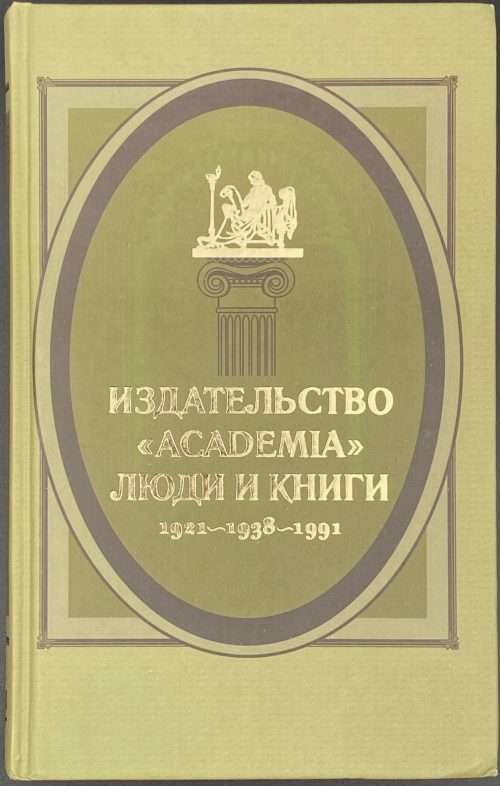 Hardcover, 20.7 x 13 cm, paper boards and spine, silver and gilt lettering, pictorial endpapers, pp.: [1-5] 6-321 [5] [10 advert.], in-text ill., total 336 pages plus 12 (8+4) leaves of plates. 944 entries (1921-1938), plus a list of new books published between 1991 and 2004. Title-page: В. В. Крылов | Е. В. Кичатова | ИЗДАТЕЛЬСТВО | «ACADEMIA» | ЛЮДИ И КНИГИ | 1921 ~ 1938 ~ 1991 | Под общей редакцией | В. А. Попова | ~ | {publisher’s device} | Москва | 2004 || Print run: 2,000 copeis. Contributors: Крылов, Вячеслав Викторович (Russian, 1940 – 2005) Кичатова, Екатерина Вячеславовна (Russian)
Hardcover, 20.7 x 13 cm, paper boards and spine, silver and gilt lettering, pictorial endpapers, pp.: [1-5] 6-321 [5] [10 advert.], in-text ill., total 336 pages plus 12 (8+4) leaves of plates. 944 entries (1921-1938), plus a list of new books published between 1991 and 2004. Title-page: В. В. Крылов | Е. В. Кичатова | ИЗДАТЕЛЬСТВО | «ACADEMIA» | ЛЮДИ И КНИГИ | 1921 ~ 1938 ~ 1991 | Под общей редакцией | В. А. Попова | ~ | {publisher’s device} | Москва | 2004 || Print run: 2,000 copeis. Contributors: Крылов, Вячеслав Викторович (Russian, 1940 – 2005) Кичатова, Екатерина Вячеславовна (Russian)




